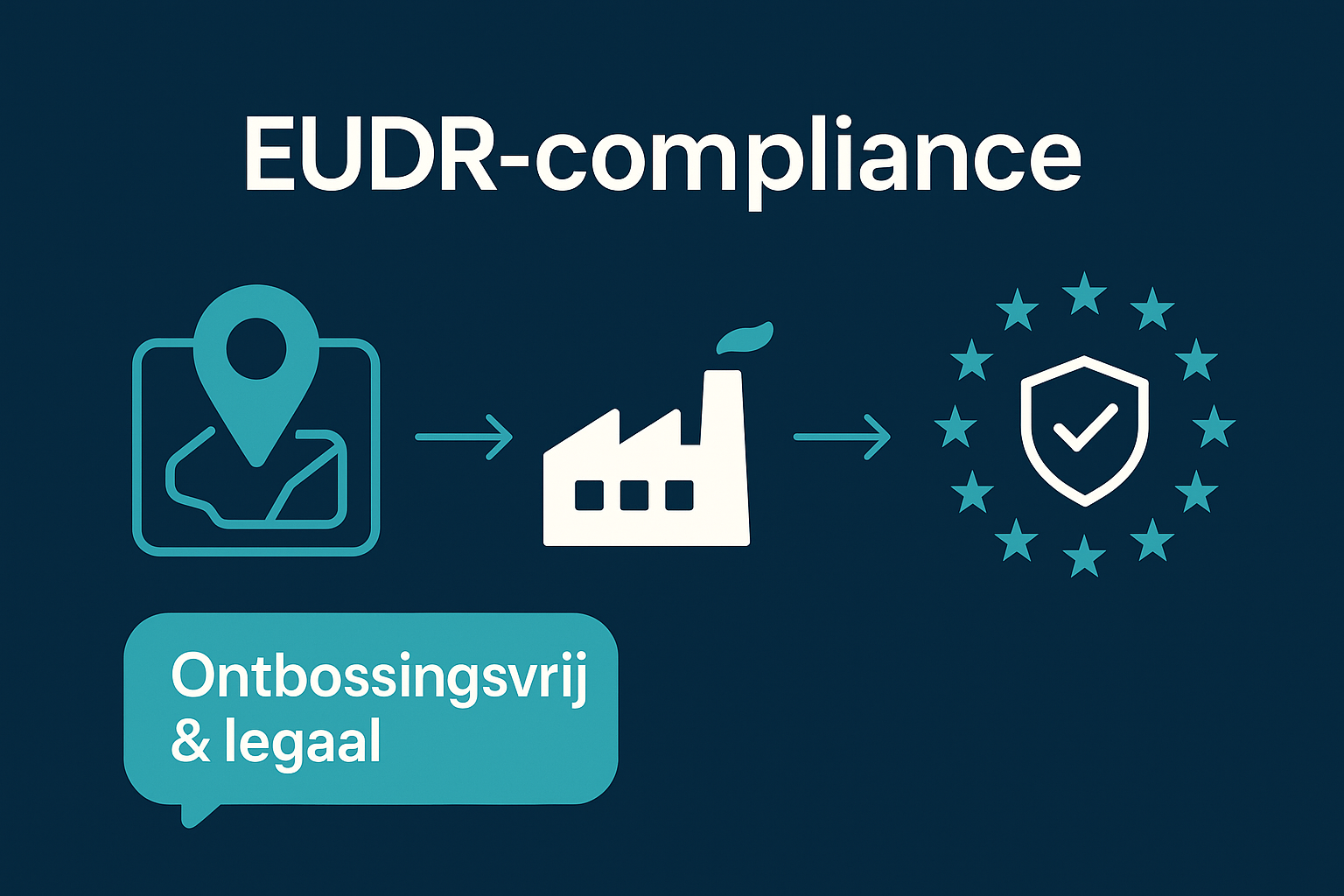EUDR (EU Deforestation Regulation) compliance.
Ensure your raw materials and products are deforestation-free and legal according to EUDR. Instrux helps with due diligence, data collection, geolocation (polygon/points), risk analysis, mitigation and submission of due diligence statements in the EU system.
What is EUDR?
The EUDR requires companies that market or export certain raw materials or derived products in the EU to demonstrate that they are deforestation-free (after the cut-off date) and produced in compliance with local legislation. The core consists of traceability to the parcel (geolocations as points or polygons), a risk analysis based on location and context, possible mitigation (additional evidence, monitoring, audits) and, for each delivery, a due-diligence statement in the EU portal.
What should you do under the EUDR?
Don’t start with the forms, but with the story of your delivery. Where does it start? On a map. You capture the plots as coordinates or polygons and connect them to the reality of your chain: farm → collection point → processor → product or batch. That doesn’t produce perfect lines, but it does produce a verifiable trail.
Then you test legality: may production take place at this location, by whom and under what conditions? You collect documents that support this and note what you are and are not sure about. Then you look at the risk of deforestation. You don’t do this by feel, but with reasoned weighting: location relative to forest, time relative to the cut-off date, country or region profile, track-record of suppliers, and independent sources (satellite, NGO, government). The result is not a stamp, but a reasoned conclusion: low, medium or high risk – with reason.
If the risk is not low, mitigation follows. Consider additional evidence, remote sensing, additional supplier statements or a spot audit. The important thing is to record what you have done and why. That way a file grows into more than a folder of PDFs: it tells how you came to your judgment.
Only then do you submit the due-diligence statement for delivery. Not as an end point, but as an intermediate station. Because EUDR is cyclical: with new deliveries, you update data, reassess risk and evaluate measures. A simple rhythm helps: fixed templates, clear owners per step and a short monthly moment when you discuss exceptions. This keeps EUDR manageable, even when volumes increase or chains change.
For whom.
EUDR is relevant to organizations that trade in or carry products that include timber, cocoa, coffee, palm oil, soy, rubber and cattle (and derivatives). This includes importers and traders within the EU, as well as producers/manufacturers who have these commodities in their supply chain. Both SMEs and large companies have obligations; the depth varies by role and risk profile.

What can Instrux do?
We connect where you are. Do you have data but lack structure? Or are you starting from scratch with suppliers in multiple countries? Instrux makes it workable:
-
Gap scan & roadmap – in a few weeks clear what is in scope, where the gaps are and which stream is best to start as a pilot.
-
Traceability & data – retrieval/validation of geolocations and supplier documents with practical templates and supplier onboarding.
-
Risk analysis & mitigation – a transparent scoring framework with sources and reasoning that passes an audit; measures that are actionable.
-
Dossier & submission – complete, compliant dossier per product/batch and submission of due-diligence statements in the EU portal.
-
Monitoring & assurance – dashboards, periodic reassessments, complaint mechanism, training; integration with ERP/PLM and (where appropriate) geo-tools.